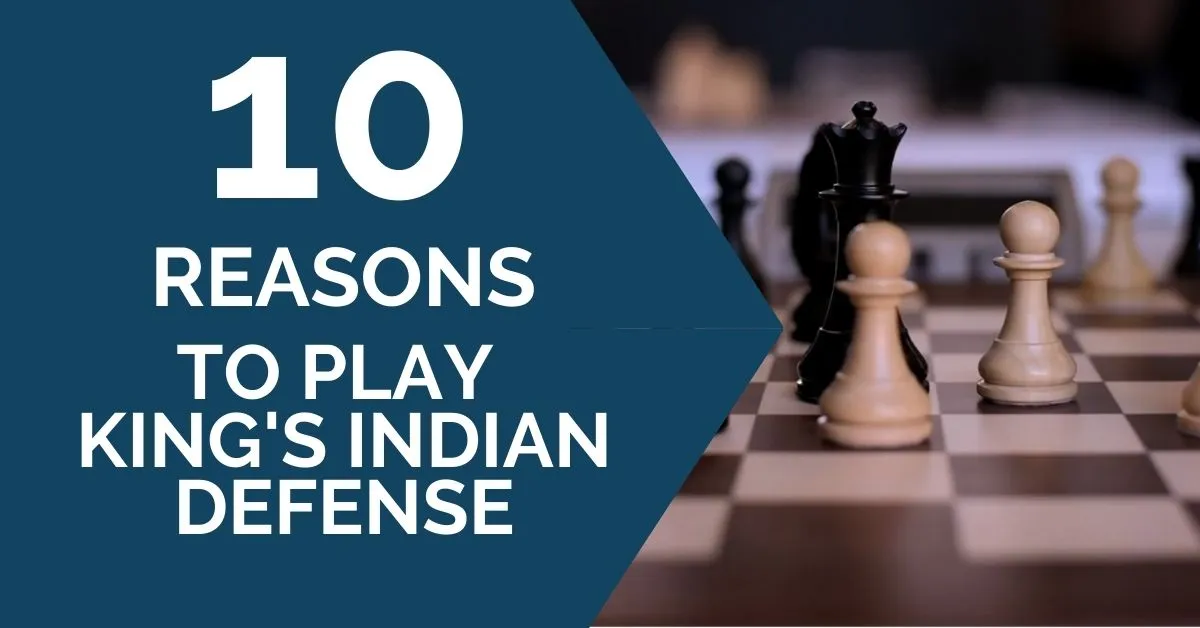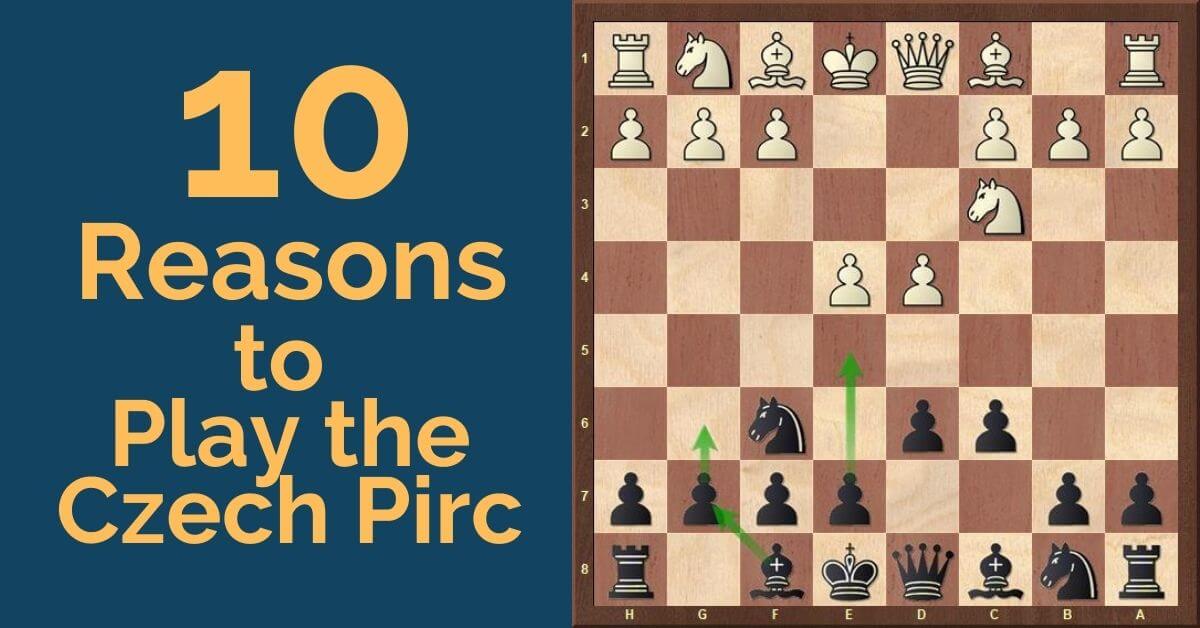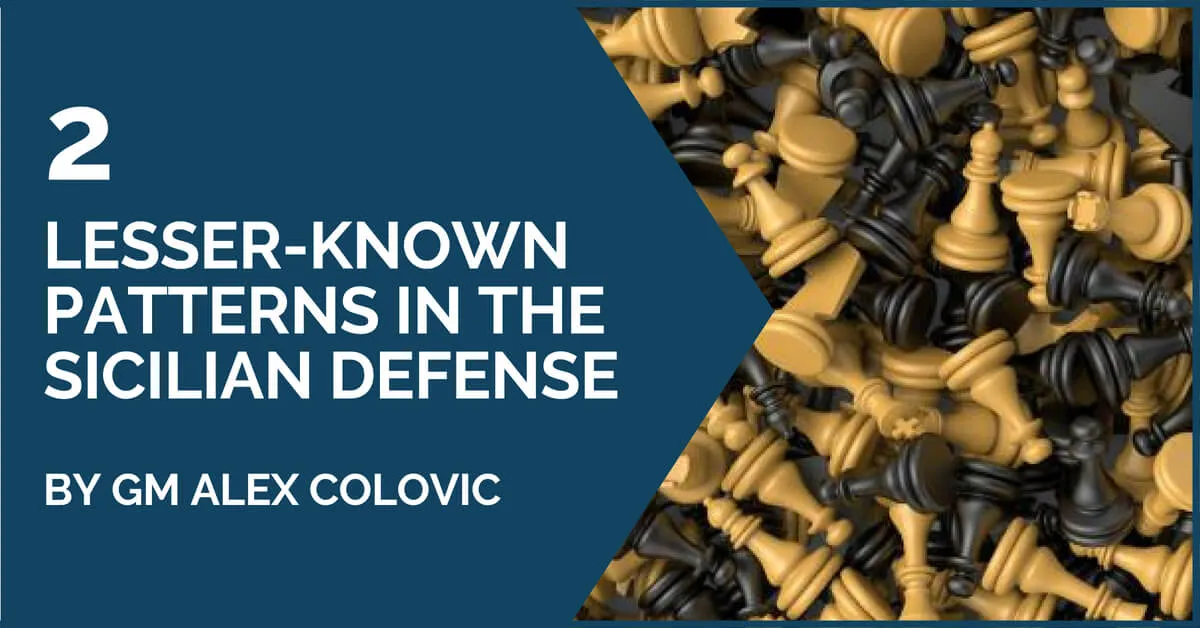10 Reasons to Play King’s Indian Defense

King’s Indian Defense (KID) is one of the most romantic and charming chess openings ever. It is the best weapon for those who want to play for a win with Black pieces against 1.d4. Black temporarily gives up the center to develop quickly and attack enemy central pawns later. This approach creates strategic imbalances from the very beginning and leads to complicated and fighting positions.
Here are 10 reasons why you should play the King’s Indian Defense.
1. King’s Indian Defense is the best opening to play for a win with Black
This was already mentioned in the beginning, but let’s elaborate a bit. The other openings after 1.d4 either are too risky for Black or allow White to play with little risk. The King’s Indian Defense is the golden mean: it is theoretically sound yet challenging.
2. KID is a favorite of the greatest champions
The King’s Indian was the main opening of the greatest players of all time – Robert Fischer and Garry Kasparov. Modern aficionados are Hikaru Nakamura, Teimour Radjabov, Ding Liren, Alexander Grischuk, Alireza Firouzja, and many other top players.
3. King’s Indian Defense allows you to attack White’s king
In most of the lines, Black builds a dangerous attack on the kingside while White tries to take over the queenside. In other words, it is a race where we try to checkmate our opponent while they try to collect some pawns on the other side of the board. Our goal is much more promising!
4. KID takes White out of the comfort zone
Many players hate meeting this opening. They prefer playing for a small but stable advantage in classical positional openings. In the King’s Indian, Black fights for the initiative attacks your king, targets your center with active pieces… Few people would enjoy having such problems.
5. King’s Indian Defense is flexible and adjustable
King’s Indian is a very flexible and versatile opening that gives you a choice of different setups and plans. Black can play for …e7-e5 or …c7-c5 pawn breaks, choose different squares for the knights, close or open the center, and so on. This makes it more interesting to play and gives more opportunities to outplay your opponent.
6. You can use the same KID plans against different White’s ideas
If your opponent tries to surprise you with a line that you don’t know or suddenly forgot, you can always rely on your general knowledge and stick to the typical King’s Indian plans and maneuvers.
7. In King’s Indian Defense it is difficult to trick you with move orders and transpositions
Sometimes White uses moves like 1.c4, 1.Nf3, 1.g3, 1.e3, 1.b3, and others, to trick Black and get better versions of the main lines of 1.d4. This happens, for example, in the Nimzo-Indian or the Gruenfeld Defenses. But it should never bother King’s Indian players; this opening is resistant to such things. Usually, you can play the same first moves no matter what White does.
8. KID will help you understand similar openings
The King’s Indian Attack, the Reti, the Modern-Benoni, the Benko Gambit, the Sicilian Dragon, and many other openings have much in common with the King’s Indian Defense. Knowledge of one of the mentioned openings will be highly helpful when playing the others.
9. King’s Indian Defense is sharp but yet maneuvering
Even though this opening is considered being aggressive, often Black outplays their opponents by maneuvering and making the right exchanges. This opening will teach you how to use weak squares, create outposts, and use your pieces at their best.
10. KID leads to fighting and exciting positions
Both positional and tactical players will find their way in the King’s Indian, but overall, it is an opening for brave and adventurous players. It is full of attacking and tactical possibilities, and there is always room for creativity.
Looking for more on King’s Indian Defense? Look at 7 Best Games on This Opening.
Want to play for a win with the King’s Indian Defense?
In his new 10-hour Opening Lab on King’s Indian Defense, IM Milovan Ratkovic breaks down everything you need to know to play this wonderful opening and follow in the footsteps of the greatest chess players.











Comments: